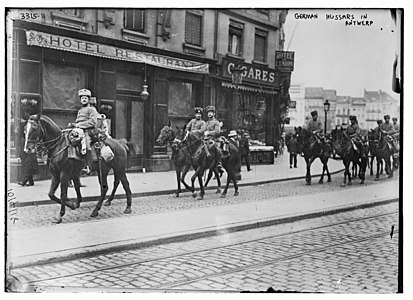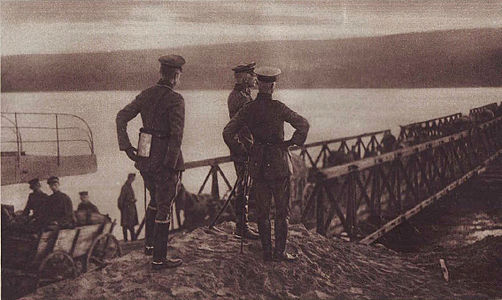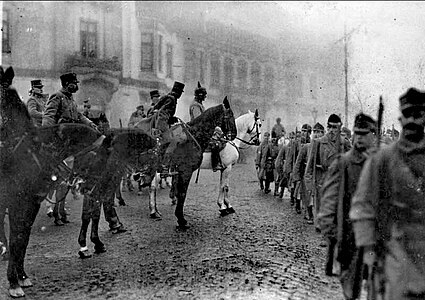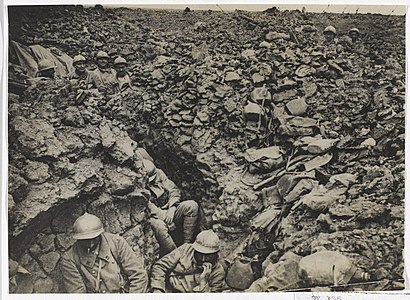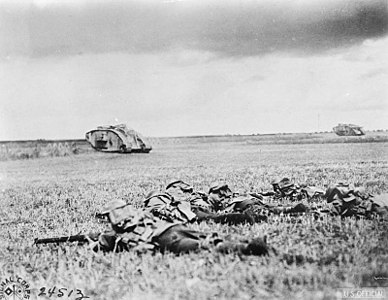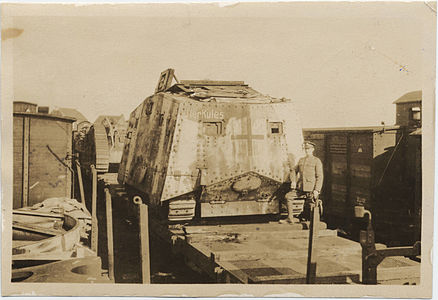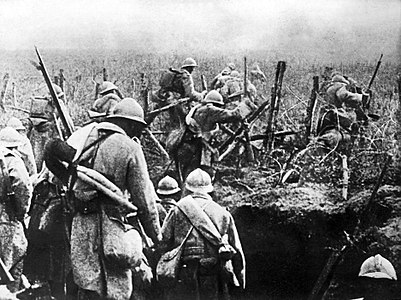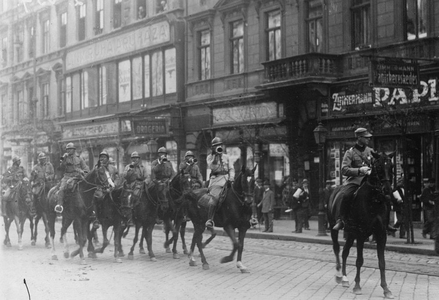Marsh Wars (Pacifica)
| Marsh Wars | |||||||
|---|---|---|---|---|---|---|---|
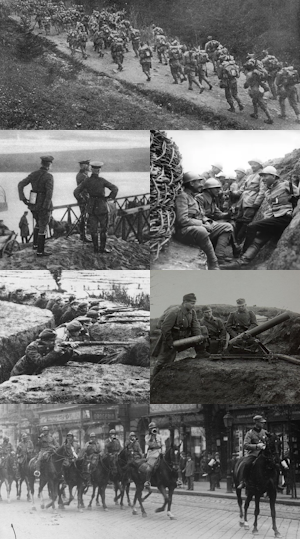 (clockwise)
| |||||||
| |||||||
| Main belligerents | |||||||
|
|
| ||||||
| Commanders and leaders | |||||||
|
|
| ||||||
| Strength | |||||||
|
|
| ||||||
| Casualties and losses | |||||||
|
287,000 killed 380,000 wounded |
296,000 killed 320,000 wounded | ||||||
The Marsh Wars (Castonish: Guerras de las Marismas; Ezervulgish: Mocsarak háborúi) were a series of conflicts in the early 20th century as a result of a decade of crumbling Stoino-Ezervulgish relations. Open hostilities began on 5 September 1914 and would be marked by both swithering and static frontlines until 13 November 1918. The war would be named after the formation of marshes due to extreme weather conditions elevated through trench warfare. The conflict was one of Pacifica's first wars with the widespread use of trenches, chemical weapons, tank warfare and modern infantry tactics.
Background
Both Stoinia and Ezervulge had become industrialised societies following the industrial revolution. However, the Ezervulgish King George II sought a policy of pan-Ezervulgism which brought it head-to-head with Stoinia which housed some 300,000 Ezervulgish in the Loreto, Corrientes and Norano provinces since the Hunyars' Sacking of Tolosa. King George II wished to establish a dominant Bailtemmic nation with all Ezervulgish people under one rule. These border provinces, in addition to hosting Ezervulgish minorities, were rich in coal and steel mines which would help fuel the further industrialisation of Ezervulge. It was hoped that their incorporation would resurge Ezervulge as a Bailtemmic power since the defeat in Peter I's War as well as serve as a long-term economic investment to consolidate Ezervulgish prosperity, which in turn would again strengthen the position of the Ezervulgish King.
Stoinia was focusing on its overseas territories through industrial development programs. Especially Shai Kong's harbour expansion had become a priority against Paeonisian and Izaakian competition as Stoinia wished to maintain its role in global trade. Recently, Shai Kong had become overcrowded and the lacking infrastructure had made Hai Men Island a preferable choice over Shai Kong. This required government intervention overseas to fully develop Corinian industries so that they may operate autonomously. In addition, citizens overseas had grown their own identities which had caused incidents of rebellion. As such, Prime Minister Tiberiu Stolojan frequently voyaged to Corinia and Carraca to oversee the industrialisation of the overseas territories. This would however invite Ezervulgish opportunism.
Stoino-Ezervulgish relations would start to deteriorate from 1908 and Ezervulgish Ambassadors would become increasingly volatile and propagate stories of how Ezervulgish in Stoinia are abused by Stoinian governance. Later studies would show that Ezervulgish marginalisation happened due to significant language barriers in local administrations. Nonetheless, the Ezervulgish rhetoric only grew more zealous over the years until it reached a breaking point on 5 September 1914 when Ezervulge formally declared war with the intent to liberate the Ezervulgish minority in Stoinia.
Strategy
Stoinia

Ezervulge -- Szilágyi-plan

Events
First Marsh War
Villámló Ló offensive
- Villámló Ló offensive
-
A portrait of Field Marshal Mákkeszőr Ámbrus in Hunyászok uniform in 1914.
-
Field Marshal Mákkeszőr Ámbrus at the Crossing of the Narcea, following the Battle of Carreño.
-
Field Marshal Mákkeszőr Ámbrus inspecting his troops in Carreño.
Stoinian counter-offensive & stalemate
Second Marsh War
Second Ezervulgish invasion & stalemate
- Summer War
-
Stoinian troops in watered-down trenches.
-
Stoinian tank escorted by a platoon at the Battle of X.
-
Ezervulgish tanks unloaded for the Battle of Y.
-
Stoinian III Army marching through Varcathian mountain passes to flank Ezervulgish lines.
Caballo Salvaje offensive
- Caballo Salvaje offensive
-
Stoinian trench offensive.
-
Stoinian tanks advancing Ezervulgish fields.
-
Stoinian cavalry in Sárkanyvölgy.
-
King Alexandru VIII inspecting troops in Sárkanyvölgy.
-
Stoinian troops feeding Ezervulgish citizens.

